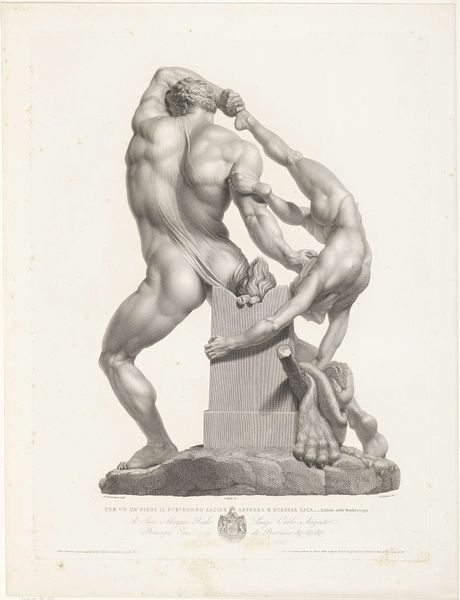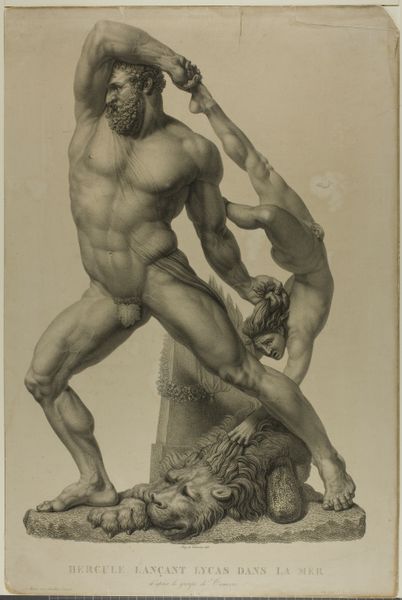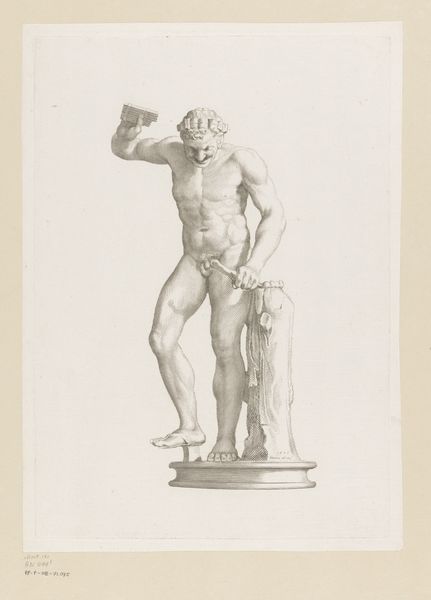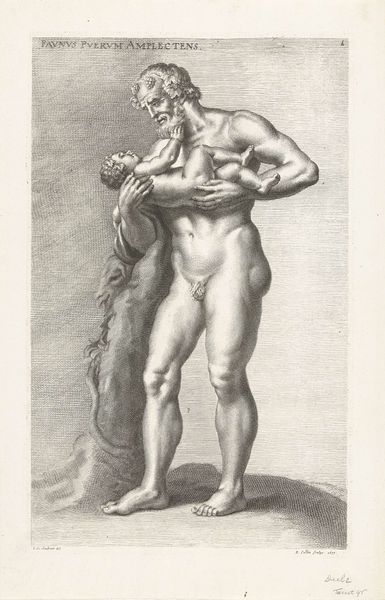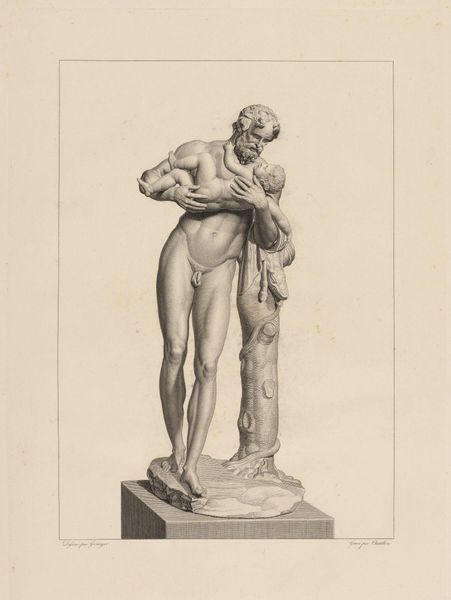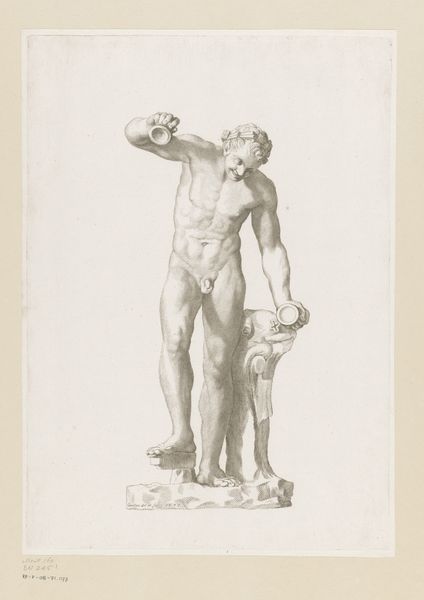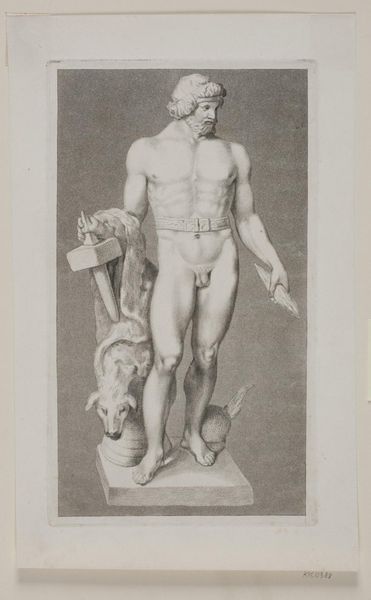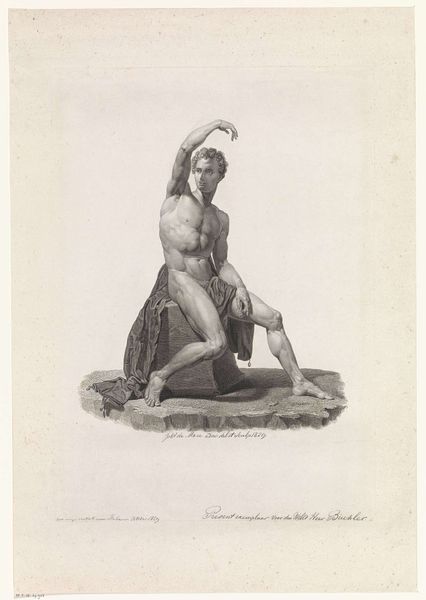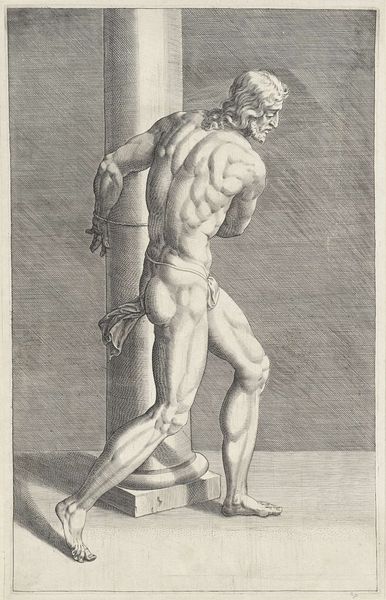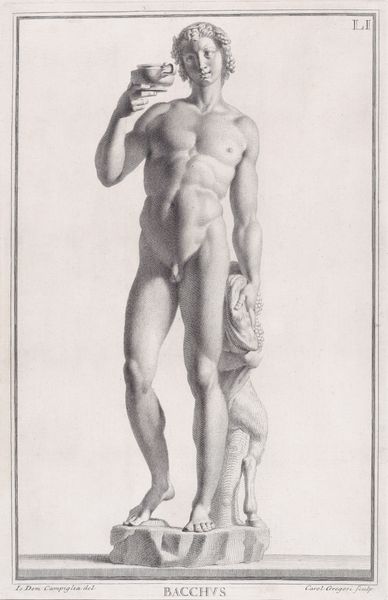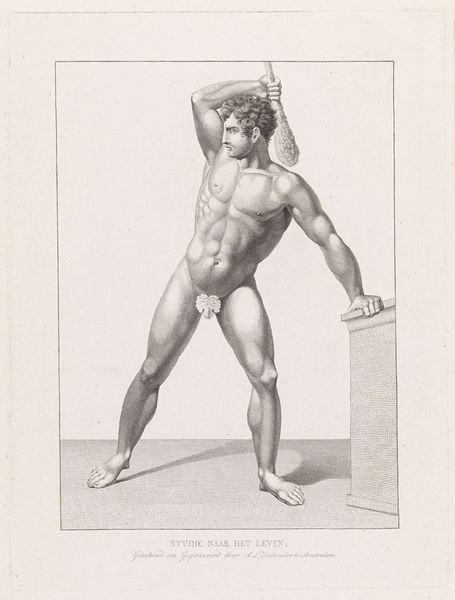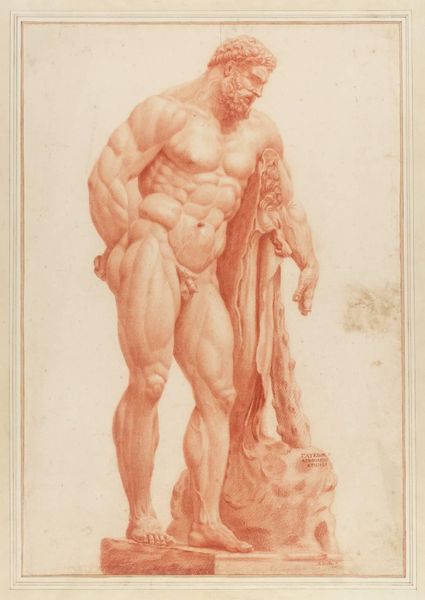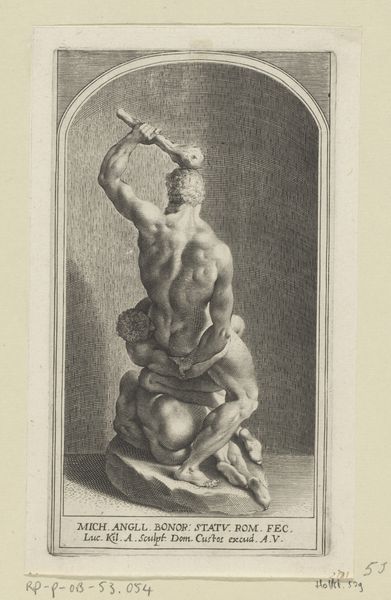
print, engraving
#
neoclacissism
# print
#
landscape
#
classical-realism
#
figuration
#
form
#
line
#
history-painting
#
engraving
Dimensions: height 621 mm, width 475 mm
Copyright: Rijks Museum: Open Domain
Curator: What strikes me first is the overwhelming sense of rage emanating from this image, and how power, in its most raw form, seems to corrupt and destroy. Editor: I can see that. It’s a very visceral piece. This engraving by Giovanni Folo, created in 1812, depicts a scene from Greek mythology: Hercules and Lichas. It’s a masterclass in Neoclassical form and line, perfectly capturing a dramatic moment. Curator: Neoclassical certainly, you can see it in the hyper-masculine depiction of Hercules. He's literally throwing Lichas, his messenger, after being poisoned by a robe Lichas brought him. Talk about toxic masculinity manifesting violently. The image plays into problematic tropes of male anger and dominance, echoing throughout centuries of Western art and impacting societal expectations to this day. Editor: Precisely. And think about the symbolism inherent here. Hercules, the epitome of strength and divine lineage, is undone by deception. Lichas, an innocent messenger, becomes the target of his uncontrolled wrath. The poisoned robe is symbolic of hidden treachery, a visual representation of the unseen forces that can bring down even the mightiest heroes. Even the lion skin adds another layer; a defeated beast now serving as Hercules' garb—a warning perhaps that he is no longer in control of his primal instincts. Curator: That’s interesting… But doesn't it also subtly perpetuate a dangerous narrative of victim-blaming? Lichas is merely the messenger; shouldn't our critical gaze focus on the power dynamics that enabled the initial act of betrayal and its ultimate consequences, especially for the powerless individual? It highlights how those in positions of authority, like Hercules, escape accountability for their violent actions, blaming the easier target—those in subordinate positions. Editor: But notice how Folo uses the engraving technique itself. The fine, precise lines add to the emotional weight of the piece and echo that historical and psychological connection of power. The use of negative space even intensifies the figures, emphasizing their drama and plight. It amplifies the contrast between strength and fragility. Curator: So you're looking at Folo drawing a clear picture of those classical themes using his visual language, whereas I’m trying to unpack those classical themes from a modern context to highlight and challenge that depiction? It leaves a sour taste because this easily romanticizes such harmful social imbalances. Editor: Absolutely. Visual traditions often evolve into reflections, rather than representations, of continuity. Curator: Food for thought about accountability and justice that resonates today.
Comments
rijksmuseum about 2 years ago
⋮
Hercules casts his servant Lichas, who holds on for dear life in vain, into the sea. The vengeful centaur Nessus gave Hercules’ wife his own blood with the promise that it would ensure her husband’s faithfulness. Lichas brought Hercules a garment drenched in Nessus’ blood, however it proved to be poisoned and caused Hercules unbearable pain. The frenzied Hercules killed Lichas. In the end, the desperate Hercules cast himself on a pyre and died.
Join the conversation
Join millions of artists and users on Artera today and experience the ultimate creative platform.
